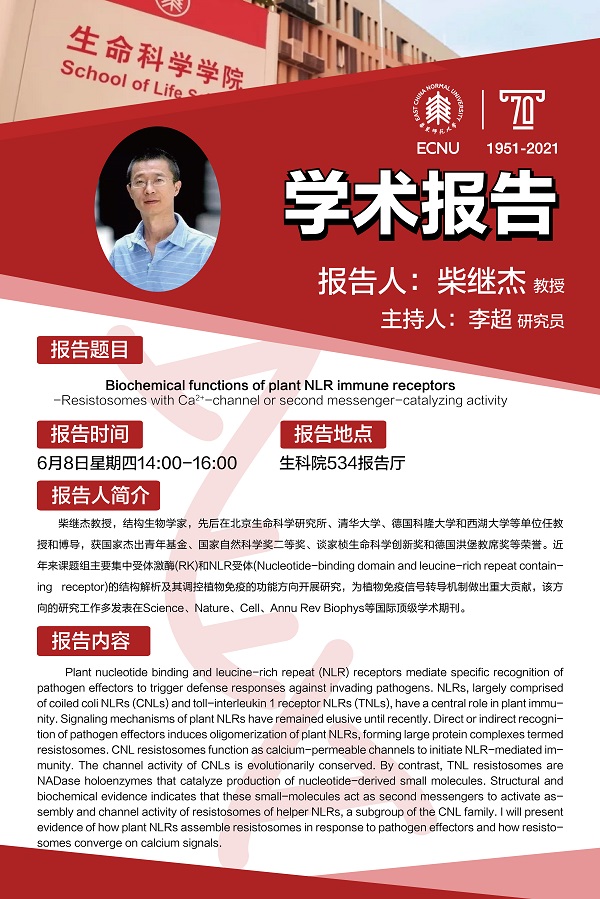报告题目:Biochemical functions of plant NLR immune receptors-Resistosomes with Ca2+-channel or second messenger-catalyzing activity
报 告 人:柴继杰 教授
邀 请 人:李超 研究员
报告时间:6月8日下午2:00---4:00
报告地点:生命科学学院534报告厅
报告人介绍:
柴继杰教授,结构生物学家,先后在北京生命科学研究所、清华大学、德国科隆大学和西湖大学等单位任教授和博导,获国家杰出青年基金、国家自然科学奖二等奖、谈家桢生命科学创新奖和德国洪堡教席奖等荣誉。近年来课题组主要集中受体激酶(RK)和NLR 受体(Nucleotide-binding domain and leucine-rich repeat containing receptor)的结构解析及其调控植物免疫的功能方向开展研究,为植物免疫信号转导机制做出重大贡献,该方向的研究工作多发表在Science、Nature、Cell、Annu Rev Biophys等国际顶级学术期刊。
报告摘要:
Plant nucleotide binding and leucine-rich repeat (NLR) receptors mediate specific recognition of pathogen effectors to trigger defense responses against invading pathogens. NLRs, largely comprised of coiled coli NLRs (CNLs) and toll-interleukin 1 receptor NLRs (TNLs), have a central role in plant immunity. Signaling mechanisms of plant NLRs have remained elusive until recently. Direct or indirect recognition of pathogen effectors induces oligomerization of plant NLRs, forming large protein complexes termed resistosomes. CNL resistosomes function as calcium-permeable channels to initiate NLR-mediated immunity. The channel activity of CNLs is evolutionarily conserved. By contrast, TNL resistosomes are NADase holoenzymes that catalyze production of nucleotide-derived small molecules. Structural and biochemical evidence indicates that these small-molecules act as second messengers to activate assembly and channel activity of resistosomes of helper NLRs, a subgroup of the CNL family. I will present evidence of how plant NLRs assemble resistosomes in response to pathogen effectors and how resistosomes converge on calcium signals.



